How a Manufacturer Uses R&D to Keep Old Jets Flying
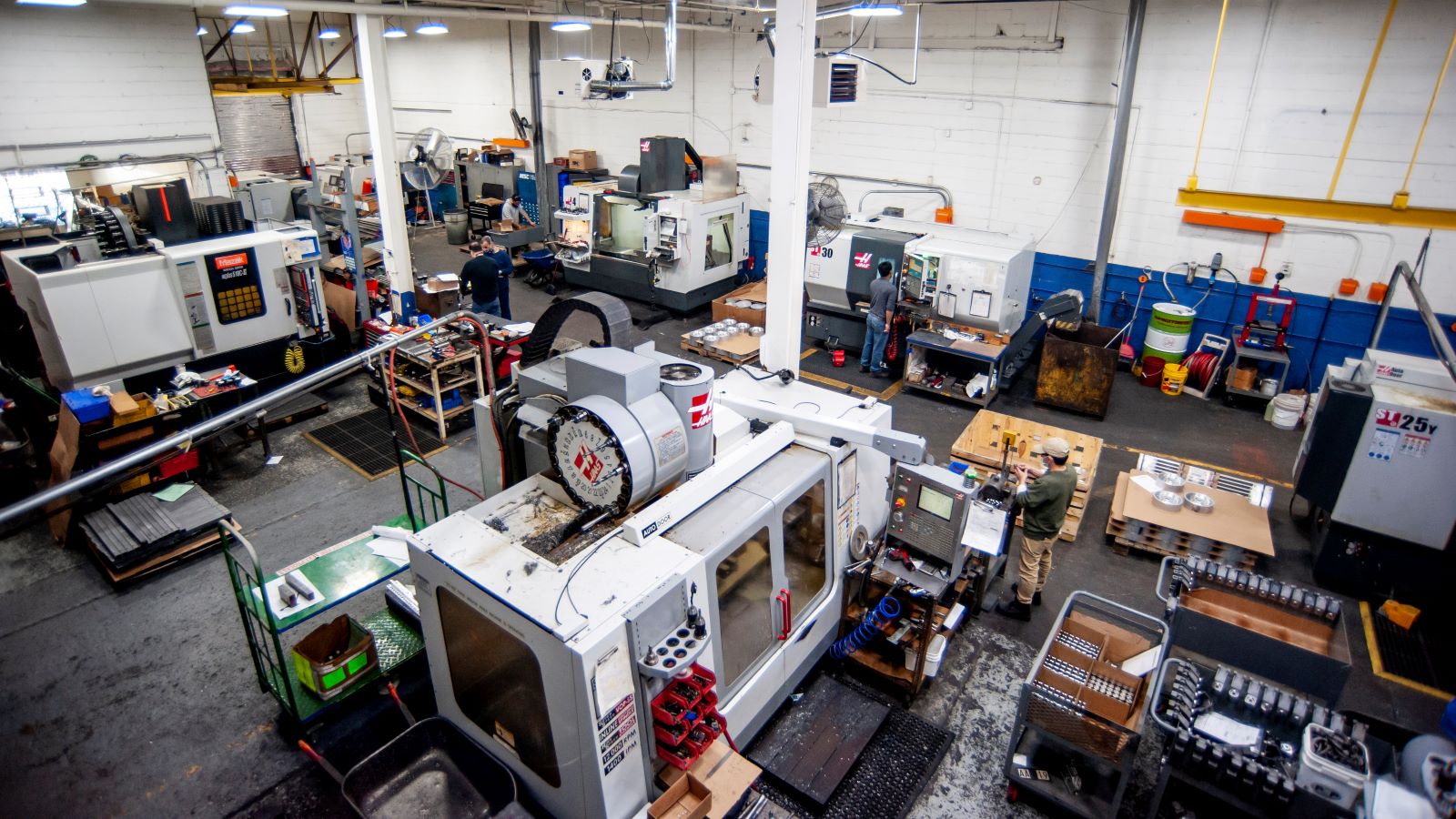
What does the U.S. military do when an expensive asset like a plane or a weapons system begins to break down?
Often, it turns to companies like Parts Life, Inc.—an innovative manufacturer that can reverse-engineer obsolete parts and help find solutions for hard-to-replicate products. But after a tax law change went into effect in 2022, the New Jersey–based manufacturer is facing increased costs for research and development, creating a barrier to the kind of innovation that is the focus of its business.
The change: Until the beginning of 2022, businesses could deduct 100% of their R&D expenses in the same year they incurred the expenses. Starting this year, however, a tax law change requires businesses to spread their deductions out over a period of five years, making it more expensive to invest in growth and innovation.
A focus on innovation: For Parts Life, coming up with new ideas is an essential, daily activity.
- “Parts Life is built around being a solutions provider,” said Parts Life President and CEO Sam Thevanayagam. “We are providing solutions for very expensive and mission-critical assets that are extremely strategic for the defense of the nation, but are also older—so their parts are not necessarily being supported.”
- “That’s where we come in to do reverse engineering. So, we’re looking at an old problem, but using innovation to solve it going forward.”
A benefit for savings: By helping the military extend the life of its assets, Parts Life also helps taxpayers.
- “We’re taking care of the warfighter and the taxpayer,” as Thevanayagam puts it.
A look ahead: As global conflicts shift, the U.S. military needs suppliers like Parts Life to help it develop solutions for future challenges, too.
- “Right now, our military is coming out of conflicts in Afghanistan and Iraq, but future conflicts may involve different terrain with different problem sets,” said Thevanayagam.
- “The work that we are doing today is helping them figure out how to approach those challenges. We’re having them tell us where they need to be, and then we’re helping them with the innovation they need to be successful.”
A tough choice: With the change in tax law, companies like Parts Life will be forced to make difficult decisions about how to spend scarcer resources, harming their ability to do critical, forward-looking work.
- “Currently, we’re leaning forward in resources and talent to lead the future,” said Thevanayagam. “If the government is going to pull the rug out from under us, we’re not going to be able to be aggressive. We’ll have to focus on maintaining our business rather than investing in new innovation.”
Our take: The NAM has pushed forcefully for the tax change to be reversed—and in October, told policymakers that the R&D amortization provision poses a “serious threat to our national security,” in part because of its impact on manufacturers like Parts Life that supply and support the U.S. military.
The bottom line: “The only way for us to continue to be relevant is to make sure that we’re investing in innovation and seeing what we can do to be a part of designing the future,” said Thevanayagam.
Visit the NAM’s R&D Action Center for critical R&D policy updates, industry stories and an opportunity to engage directly with your members of Congress.
How Manufacturers Can Boost Their D&I Efforts

The manufacturing leaders who met in Washington, D.C., this month agreed wholeheartedly: D&I is integral to building and retaining the workforce of tomorrow.
At the third-annual Diversity+Inclusion Summit convened by the Manufacturing Institute, leaders gathered to share data, insights and lessons gleaned from their own D&I efforts. Hailing from many different industry sectors and companies of all sizes, the panelists and attendees laid out concrete actions that can transform companies’ D&I objectives.
Why it matters: With 2.1 million jobs expected to go unfilled in the industry by 2030, manufacturers need to find new populations of potential employees. Recruiting more women, racial and ethnic minorities and neurodiverse workers can expand companies’ talent pools and strengthen their workforces.
- In fact, increasing the current female workforce from 29% to 35% would fill the industry’s 746,000 open jobs all on its own, according to a recent study by the MI and Colonial Life.
- That’s why the MI is working to meet this target through its 35 x 30 Campaign—i.e., increasing the percentage of women in manufacturing to 35% by 2030.
How to do it: The summit offered important tips to help companies boost their D&I efforts, including:
- Get buy-in from company leaders: Research shows that D&I efforts lead to greater productivity, increased innovation and higher revenue—not to mention the recruitment and retention benefits. Once companies set D&I goals, leaders should incorporate D&I objectives into their annual goals to create opportunities for accountability.
- Use employee resource groups in a structured way: Companies should set up organizational structures for their ERGs that will ensure longevity and encourage fresh thinking, as well as align with companies’ overall D&I goals. These groups should have their own budgets and rotating leadership positions. When possible, the contributions of ERG leaders should be included in their incentive programs or annual goals.
- Educate your first-line supervisors about D&I: By training first-line supervisors on the latest in D&I and company-specific objectives, companies can help them both support their teams better and collect feedback to inform the overall effort.
- Offer child care and flexibility: In the post-pandemic environment, companies are still exploring what works best for them, but one thing is clear: to recruit and retain talent in a tight labor market, companies need to provide employees with options. (Check out our recent webinar on the same subject.)
Learn more: Interested in joining the conversation? Check out the MI’s D&I tools and resources, and register for upcoming events, including our upcoming Virtual Diversity+Inclusion Summit on Dec. 16, here. The virtual summit will include some recorded sessions from this event as well.
Corning Confronts R&D Hurdles
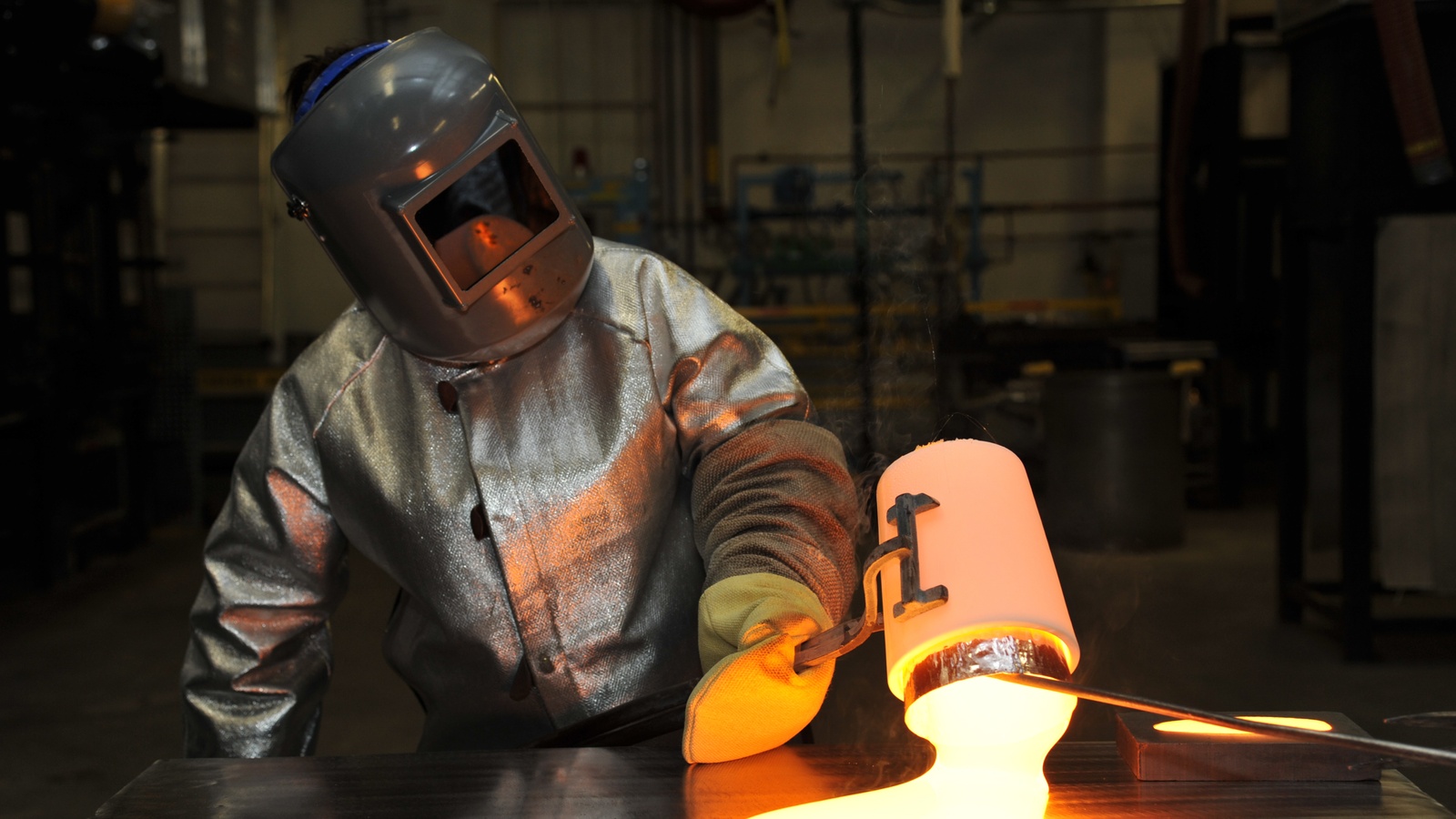
This story can also be found within the NAM’s R&D action center.
Corning Incorporated has been turning out innovations for well over a century and a half—since 1851, to be exact. But a recent change in tax policy that makes R&D more expensive could have a significant impact on the company’s ability to build on its impressive history.
- “We have a wonderful track record for innovation,” said Tymon Daniels, vice president of tax at Corning, a material sciences manufacturing company with a focus on glass.
- “In 1897, when Thomas Edison was working on electric lights, he came to us to make the glass bulbs. 110 years later, when Steve Jobs was working on the iPhone, he came to us to make the glass used for the screen. More recently, we figured out a way to make special glass vials that sped up production of the COVID vaccine. … We’ve been able to do this because of R&D.”
The issue: Until the beginning of 2022, businesses could deduct 100% of their R&D expenses in the same year they incurred the expenses. Starting this year, however, a tax law change requires businesses to amortize or spread their R&D expenses out over a period of five years, making it more expensive to invest in growth and innovation.
The impact: According to Daniels, the abrupt change in a policy that has existed for decades poses a serious challenge for the company.
- “The R&D deduction has been in existence for over 70 years—a very good tax policy. Requiring the amortization of R&D expenses is a dramatic shift to a very bad tax policy,” said Daniels. “It causes a significant spike in cash taxes.”
The trade-offs: At a time when company leaders are trying to make decisions about how to invest finite resources, a significant increase in the tax burden can hinder future growth plans, Daniels emphasized.
- “Our C-suite is trying to make decisions about big issues like capital expenditures and jobs,” said Daniels. “This makes those decisions harder and comes at a time when the economic outlook is highly uncertain.”
The action: Corning is asking Congress to find a solution, and quickly.
- “We need lawmakers to extend the full deductibility of R&D expenses,” said Daniels. “If Congress can’t make a permanent fix, then at least making full deductibility retroactive to 2022 and extending it through 2025 would still be good. Otherwise, the impact to Corning may be extra cash taxes of roughly $150 million in 2022 alone.”
The last word: “Requiring the amortization of R&D is all I’m thinking about right now,” said Daniels.
“We’re Gonna Get Hit Hard”: How an R&D Tax Policy Change Hurts Manufacturers
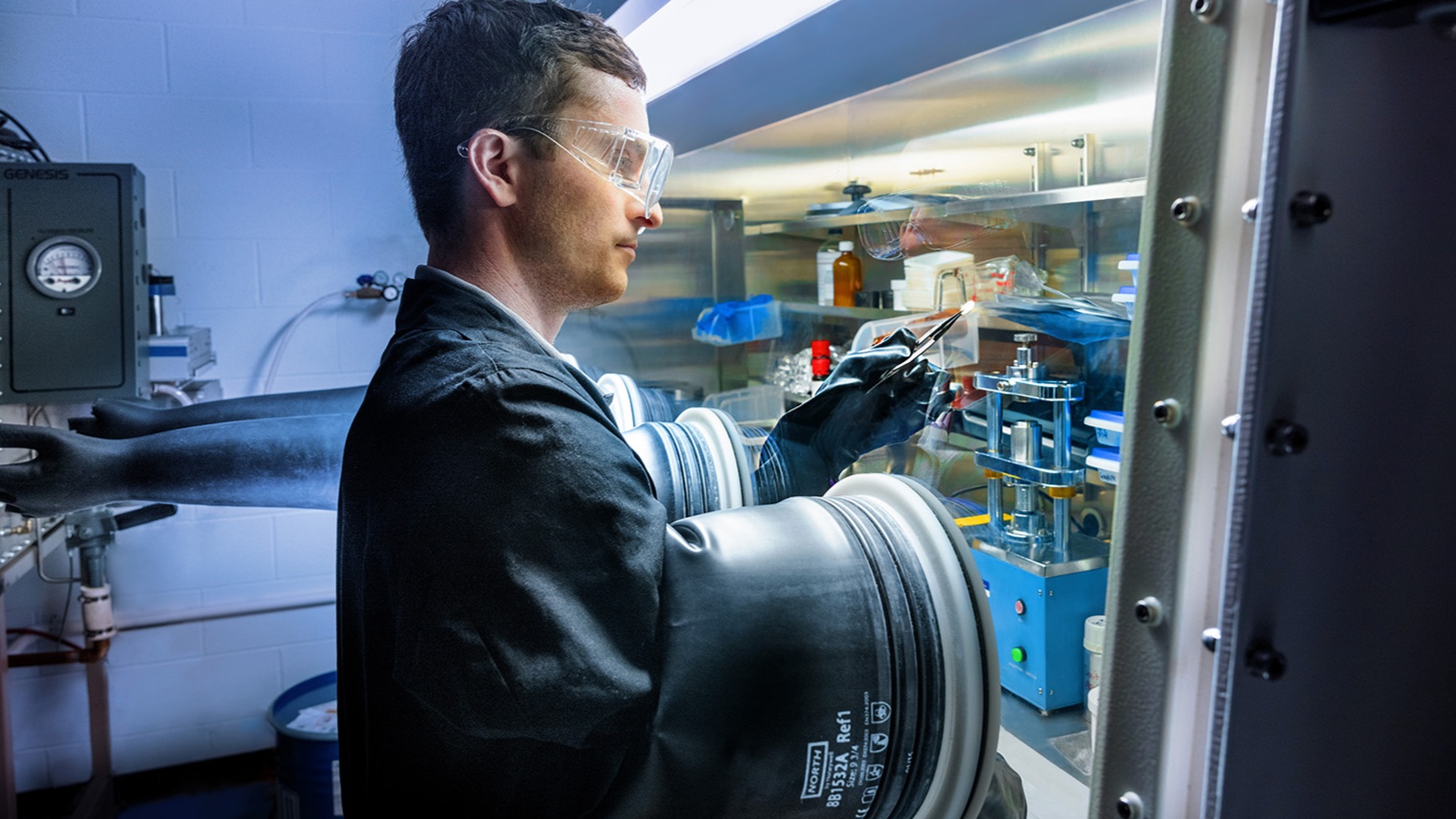
This story can also be found within the NAM’s R&D action center.
Miltec UV operates at the cutting edge of the manufacturing industry, developing new UV lamp systems for curing inks and coatings for everything from optical fiber to soup can lids. But after a tax law change went into effect in 2022, the Maryland-based manufacturer found that R&D became much more expensive—hampering its investments and tamping down its growth.
- Until the beginning of 2022, businesses could deduct 100% of their R&D expenses in the same year they incurred the expenses. Starting this year, however, a tax law change requires businesses to spread their deductions out over a period of five years, making it more expensive to invest in growth and innovation.
We spoke with Miltec UV President Bob Blandford to understand how the change was impacting his company and consumers in the United States and around the world.
The impact: Because the law changes the way businesses have handled investments for decades, companies like Miltec UV are having to grapple with a significant new cost that they had not anticipated previously.
- “Absent congressional action, we’re gonna get hit hard,” said Blandford. “Our taxes are going to go up dramatically. That’s cash getting sucked out of the business. So that’s going to get pretty ugly.”
A critical moment: Miltec UV is facing this challenge at a time when its leaders believe an exciting new opportunity is right around the corner. The company has developed a new technology for lithium-ion batteries, which could be used for next-generation electric vehicles.
- Over the past 11 years, Miltec UV has developed manufacturing electrodes used in these batteries, which will allow manufacturers to reduce costs and eliminate the toxic solvents used in existing battery manufacturing processes.
Yet, the new tax change threatens to place significant burdens on their development of this technology.
- “The problem is in the auto world; once they say go, it’s about a five-year process,” said Blandford. “They have to prototype, prove it, test it, then make the batteries. And during that time, we need to support R&D and support the business. So amortizing R&D over five years is a showstopper.”
- “We’re at a critical place now—we’re so close to commercializing it—and now we’re having to pay more taxes out,” said Blandford. “It hurts.”
A burden for employees: If not reversed, the harmful tax change will eat into profits, which Blandford is concerned may impact important benefits for employees. Earlier this year, Miltec UV signed on to the NAM Manufacturers Retirement program—an association-wide 401(k) retirement and savings plan—as a way to improve benefits for employees. The program, which has resulted in cost savings for employees, has proved extremely popular, he added.
- However, “The tax change will have a tremendous negative impact on cash flow, so everything will be on the table,” including retirement benefits, Blandford said.
- “Our team is important to us, and the last thing we want to do is have a negative effect on paychecks and benefits,” said Blandford. “This absolutely will have a spillover effect on every part of the business.”
The last word: “Miltec funds 100% of the company’s R&D costs through the profits of its commercial business as opposed to outside investment,” Blandford said.
- “Spreading the R&D deduction over a five-year period means that each year we will now face a higher tax burden due to the inability to immediately deduct R&D expenses. That is real money that is desperately needed to stay competitive with employee salaries, benefits and even to support new R&D positions that we now are trying to fill.”
Get involved: The NAM has deployed a digital R&D Action Center that manufacturers can visit for critical R&D policy updates, industry stories and an opportunity to engage directly with their members of Congress: https://nam.org/protect-innovation/
Manufacturers: An Expanded IP Waiver Would Jeopardize American Innovation and the Ability to Combat Future Pandemics
Washington, D.C. – Following the announcement by the Office of the U.S. Trade Representative calling for a delay in a World Trade Organization decision on whether to expand a waiver of intellectual property, National Association of Manufacturers Vice President of International Economic Affairs Ken Monahan released the following statement:
“An expanded intellectual property waiver would jeopardize American innovations that are fundamental to fighting current and future pandemics and undermine U.S. technology leadership over our commercial rivals, such as China. Manufacturers welcome USTR’s announcement supporting a delay in the decision on whether or not to expand the WTO’s waiver on COVID-19 products and domestic supply chains and urge all WTO members to fully consider the consequences of such an expanded waiver.
“Efforts could be better spent focusing on other effective international approaches to deal with ongoing and potential global health crises.”
-NAM-
The National Association of Manufacturers is the largest manufacturing association in the United States, representing small and large manufacturers in every industrial sector and in all 50 states. Manufacturing employs more than 12.9 million men and women, contributes $2.77 trillion to the U.S. economy annually and has the largest economic multiplier of any major sector and accounts for 58% of private-sector research and development. The NAM is the powerful voice of the manufacturing community and the leading advocate for a policy agenda that helps manufacturers compete in the global economy and create jobs across the United States. For more information about the NAM or to follow us on Twitter and Facebook, please visit www.nam.org.
The Manufacturing Experience: Closing the Gender Gap
The Manufacturing Institute with support from Colonial Life released a new paper that explores what manufacturers are doing to help close the gender gap, incorporating survey responses and interviews with various company executives that identify key insights and practical advice for other manufacturers. To address the workforce shortage, manufacturers need to expand their talent pools, bringing in more diverse and underrepresented candidates.
Women represent a sizable talent pool that manufacturers cannot ignore, especially as the sector becomes more advanced. Earlier this year, the MI launched our 35×30 campaign, which aims to do just that—increase the percentage of women among manufacturers from 29%, where we hover now, to 35% by 2030 by changing perceptions among women and girls about manufacturing as a career, attracting and retaining more female employees.
Read the full report here.
Building the Future Workforce at Rockwell’s Automation Fair
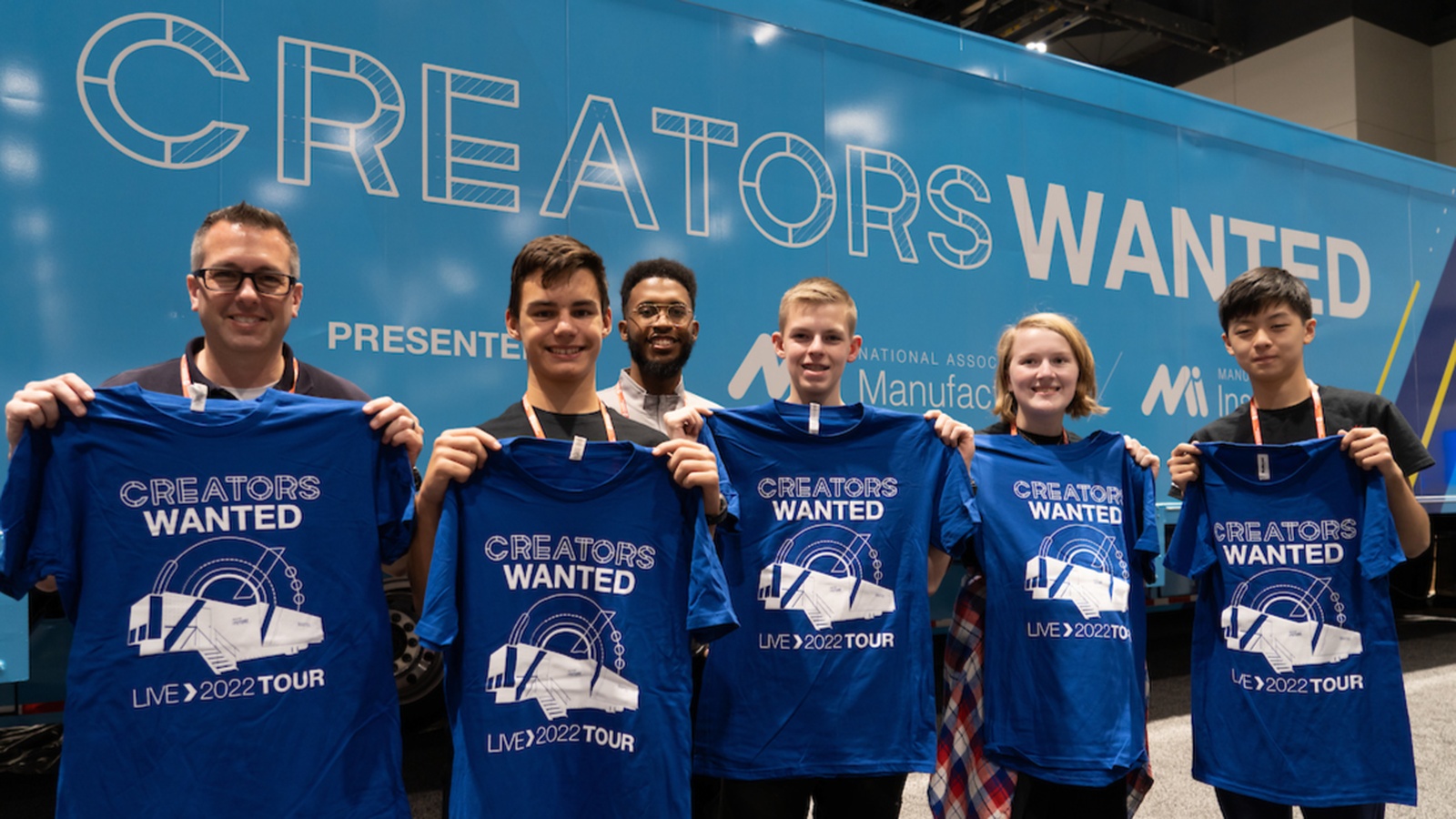
Automation isn’t just changing the manufacturing industry; it’s enabling human-centric progress in tackling the industry’s workforce crisis.
In action: As part of the Automation Fair in Chicago last week, more than 15,000 attendees got to see how manufacturers—and companies like Rockwell Automation—are providing solutions to the shortage, which could reach 2.1 million unfilled jobs by 2030, according to research from the Manufacturing Institute (the workforce development and education partner of the NAM) and Deloitte.
- Rockwell Automation brought the Creators Wanted Tour, a project of the NAM and the MI, to its Automation Fair, giving students, parents, educators and manufacturers the chance to see firsthand how digital transformation and new technologies are supporting careers and opportunities in modern manufacturing.
- The tour’s much-heralded immersive experience, along with displays and programs featuring experts from the MI and the Manufacturing Leadership Council (the digital transformation division of the NAM), gave attendees insight into the pathways and support available in the industry.
- FactoryFix, the official recruiting partner of Creators Wanted, was also on hand to showcase its manufacturing talent platform for job seekers—and manufacturers searching for a one-stop recruiting solution.
Changing perceptions: Creators Wanted aims to shrink the workforce gap by dispelling myths about automation and attracting the next generation to manufacturing jobs. It’s seeing impressive success, MI President Carolyn Lee said during a session at the event.
- “Today 40% of parents have a positive perception of manufacturing,” Lee said, citing a recent joint Deloitte–MI study. “And what we’re finding is that parents see these are durable careers with great possibility and opportunity, and they’re encouraging their children to consider them.”
Digital help: “Digital is going to help manufacturers deal with their workforce issues because it’s going to not only help change the perception of the industry, but create new jobs going forward, particularly in math-intensive areas like data analytics and artificial intelligence,” said MLC Vice President and Executive Director David Brousell.
- Brousell cited the MLC’s “Manufacturing in 2030 Project,” saying, “We have to think about digital transformation as human-centric digital transformation—because we’ve got to bring the technology and the people together simultaneously to have an effective transformation.”
Impressive results: Since it began just more than a year ago, the Creators Wanted Tour has seen more than 8,000 students pass through its immersive mobile experience, where more than 75% of attendees leave with a significantly improved view of manufacturing.
- More than 510,000 students and career mentors have also signed up to learn more about modern manufacturing careers.
- Creators Wanted has recruited successfully both mentors and mentees for the mentorship program of Women MAKE America, an MI initiative that aims to close the gender gap in manufacturing.
- The Automation Fair offered more than 150 interactive sessions on the newest industrial solutions and best practices, and more than 200 companies exhibited across 200,000 square feet at Chicago’s McCormick Place.
Media mentions: The fair and Creators Wanted’s presence drew a slew of media coverage, including from “Morning in America” with Adrienne Bankert, “The John Howell Show” on WLS-AM, Univision Chicago and suburban Chicago’s Daily Herald.
- In addition, the Daily Line published an op-ed on the future of manufacturing by NAM President and CEO Jay Timmons and Rockwell Automation Chairman and CEO and NAM Executive Committee member Blake Moret.
The last word: “As the world’s largest company dedicated to industrial automation and digital transformation, Rockwell is always looking toward the future of manufacturing,” Moret said. “Campaigns like Creators Wanted are critical to recruiting the best future talent to create a thriving workforce.”
“Cybersecurity Finds You”: An Interview with Rockwell Automation’s CISO

When asked how she got into cybersecurity, Nicole Darden Ford replies “cybersecurity kind of finds you.” The new chief information security officer at Rockwell Automation began her career in the military, where she first got into cybersecurity, then created a cybersecurity program for the U.S. Department of Agriculture before taking several leadership roles in the private sector.
Today, her advice for companies is surprisingly similar: cyberattacks will find you. As she puts it, “It’s not if, it’s when. And it’s not one time, it’s several.”
So how should manufacturers prepare for these threats? We spoke to Darden Ford recently about her recommendations, as well as Rockwell’s efforts to safeguard its own supply chain and provide services to other companies.
The current situation: “Manufacturers account for 65% of industrial ransomware last year. We’ve seen an unprecedented number of attacks, and we’ve seen attackers focus on OT,” Darden Ford says. She predicts the attacks on OT will only escalate.
- Meanwhile, many manufacturers have a clear strategy for IT, but they have not given as much thought to protecting their operational technology. Yet, as machines get more connected, their operations may become more vulnerable—especially as companies try to integrate legacy systems that weren’t “meant to be connected or patched.”
- In addition, “because we are so connected, there are third-party risks,” Darden Ford says. Small manufacturers may be more inviting targets for hackers than they realize, since their systems could provide a back door into the networks of their larger clients.
- On the plus side, manufacturers are getting smarter in building their defenses, she says. And that’s where Rockwell comes in.
Rockwell’s role: Rockwell aspires to become a “trusted advisor” to companies seeking cyber defenses, says Darden Ford. It already manufactured OT, so moving into cybersecurity for such equipment was a natural next step.
- Its partnerships with other firms, including Dragos, CrowdStrike, Cisco and others, allows
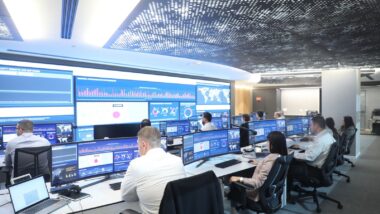 Rockwell to offer bespoke cyber monitoring and other services to its clients.
Rockwell to offer bespoke cyber monitoring and other services to its clients. - These services include penetration testing, threat detection and response and an OT “SOC”—i.e., a security operations center, which monitors threats to clients’ operations remotely.
How it works: “We have an OT cybersecurity roadmap—it starts with an assessment in your specific OT space, then walks through potential risks,” Darden Ford says. (See the end of this article for her detailed description of this roadmap.)
- The process includes building an “asset inventory, as you can’t protect what you don’t know.”
- “Then we talk about ways you can reduce your attack surface,” Darden Ford continues. “This is about segmentation. We help organizations divide their network into different domains. If you have ransomware or malware that propagates very quickly, then you have the opportunity to quarantine it.”
- In addition, the roadmap helps companies decide which tools and resources to use. For OT, you need to use very passive systems that don’t interfere with “getting the product out the door,” Darden Ford says.
After this process is complete, Rockwell’s SOC helps clients stay safe and hone their responses to real attacks.
- The SOC keeps eyes on a company’s operations remotely, notifies it of breaches within the plant network and helps it decide which threats to tackle. As Darden Ford says, the SOC stands in for the teams that companies would otherwise have to hire themselves.
On-site resources: Manufacturers can tap their existing staff to work on cyber defenses, including with offsite monitors. Darden Ford recommends drafting “the plant engineering team, along with the IT team,” who would have the knowledge and resources required.
A community effort: Large manufacturers should help educate small manufacturers on cyber issues, says Darden Ford.
- “We have a lot of suppliers, so to mitigate third-party risk, we provide more awareness about OT and advice about upping their cyber hygiene. We work closely with suppliers and do a lot of knowledge sharing,” she says.
Collaboration at the top: In addition, it’s also beneficial for CISOs and manufacturing leaders to consult their peers in what Darden Ford calls “mastermind sessions.”
- These conversations have provided her with “a lot of insights and data,” she says. She gets indispensable input on “strategies, frameworks, journeys and roadmaps,” as companies try to find their way through this cyber landscape together.
The bottom line: When asked what she says to companies that doubt the need for cyber protections, Darden Ford has a simple answer: “You wouldn’t drive your car without insurance—that’s what this is.”
- “What used to be optional is becoming mandatory,” she adds. “For small or midsize companies, you are still going to have to report” back to your large customers, many of whom require stringent protections of their suppliers. Those requirements will only get “more and more rigorous over time,” she warns.
- In other words, however you choose to do it, “you need a plan.”
The Roadmap
Darden Ford supplied us with her account of Rockwell’s cyber roadmap for its own suppliers, below. “The playbook aligns with the NIST framework, showing you step-by-step how to audit your current security state, identify gaps and take a proactive approach to mitigate risk,” she says. Here is her account of the key steps.
Step #1: Discover
- Know where you stand. Conduct a security and risk assessment—log all issues and review progress against findings.
- You can’t protect what you can’t see. You must gain a full understanding of what network assets you have on your plant floor and their current state. Start by conducting extensive network discovery and asset inventory.
Step #2: Remediate
- Work with stakeholders to prioritize assets and organizational risk levels. Take the necessary steps to eliminate, upgrade or replace unneeded, unused or unsupported OT applications and infrastructure. This will look different for every organization based on what you discover in Step #1.
Step #3: Isolate
- Establish a perimeter by physically and logically segmenting your networks. Put up a firewall and establish internal and external cybersecurity policies to protect your OT assets. Set up an on-premises industrial data center to encapsulate critical applications inside the protected OT network.
- Secure endpoints with security software on plant floor assets.
- Enable third-party remote access. Third parties need access, but you must control the access and maintain visibility into what they’re doing in your network by enabling OT access controls.
Step #4: Monitor and Respond
- Now that you have a solid foundation in place, the next step is to implement OT network monitoring to provide real-time OT cybersecurity, including malicious event/asset risk alerting, network diagnostics, AI learning and KPI dashboarding. The data only works for you if you are continuously viewing and reacting to it.
- Establish an OT SOC for 24/7 real-time alert monitoring, acknowledgement and triage. Cyberattacks aren’t limited to 9–5.
- Create an integrated IT/OT cyber event response team. Define event response and isolation protocols. IT/OT must have equal involvement and buy-in for these protocols to be successful. Execute tabletop exercises to simulate attacks and outcomes.
How Managers Can Produce Top-Notch R&D
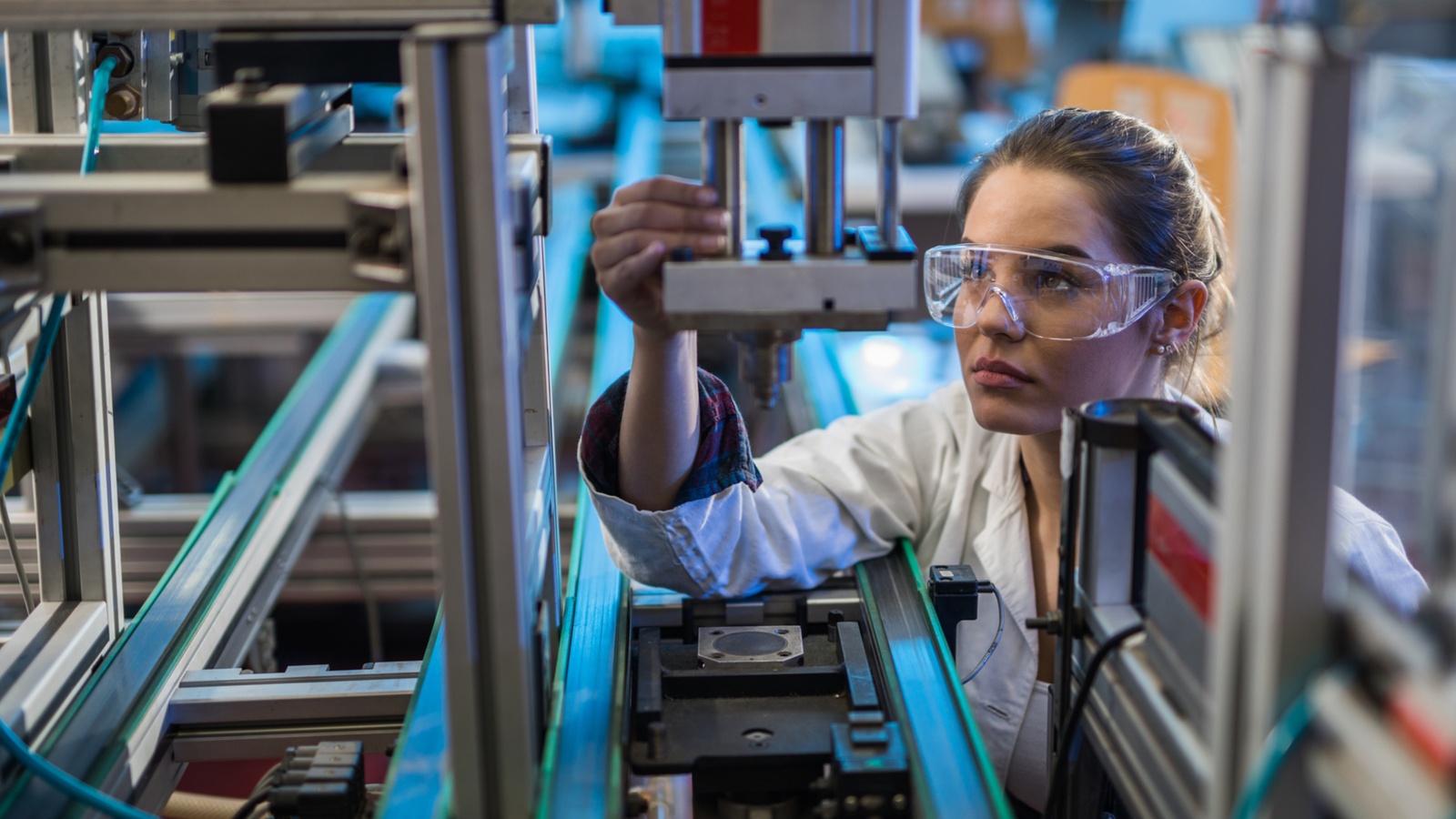
As innovation in manufacturing continues at breakneck speed, research and development is more important than ever—but it requires outstanding managers to make it all happen.
So how do these managers get the education and insights they need? The Innovation Research Interchange, a network of cross-industry innovators that the NAM combined with earlier this year, has an answer: an executive management course called Shaping Innovation Leaders.
The gist: Co-hosted by the Kellogg School of Management at Northwestern University, the course provides a forum for strategic thinking, education and networking for technology leaders from around the world.
- In 2023, it will take place on May 13–19 on the Northwestern campus in Evanston, Illinois.
The details: The goal of this seven-day program is to develop midlevel managers into leaders for their companies, by covering topics including:
- Evaluating financial results;
- Segmentation, targeting and positioning;
- Growing and defending your brand;
- Legal and strategic investments;
- Building a better network; and
- Negotiating skills and strategic alliances;
Who’s involved: To get a sense of this event’s caliber, look no further than the attendees from the 2022 course.
- They hailed from a wide range of companies, including manufacturers such as Mars, Procter & Gamble, John Deere, Hershey, NatureWorks, Air Liquide, Kimberly-Clark Corporation, Sherwin-Williams and many, many more.
The reviews are in: Participants in the 2022 course were enthusiastic about what they learned and experienced.
- “[I’m] really super impressed with the program, soup to nuts,” said John Deere Manager for Global Strategic Communications & Culture Jacqueline Kiple. “One of my favorite aspects of the program was really getting a chance to think about our business a little bit differently … to take a step back and think about the higher-level impacts that affect decision-making in our respective organizations.”
- “What I really enjoyed about this course was first and foremost the esteemed professors. … [The course] gives you a really big view of all the information you need to really understand business and understand the decisions that are getting made,” said Sherwin-Williams Associate R&D Director Tony Rook. “It gives you that top-level view of how you add value to [your] organization.”
Get involved: Registration is now open for the 2023 course. You can find additional information and register here.
How Adaptive Skills Can Play a Pivotal Role in Building the Manufacturing Sector of the Future
This new research from MI and EY on adaptive skills in the manufacturing workplace. What are adaptive skills? Simply put, they are skills or traits that enable individuals to transform their abilities as their demands and environment change. There is a need for broader and evolving skillsets in the manufacturing sector and for building a workforce motivated by opportunities for growth. Doing this will help manufacturers transition to workplaces to a point where forward-thinking, engaging, and digitally enabled work is the norm.